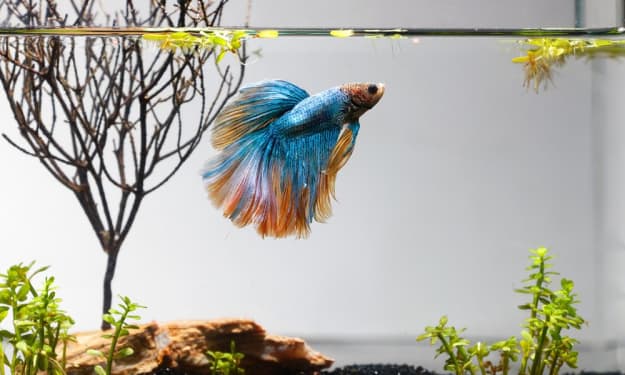How to train your pets: the ultimate guide
Training you pets at home

Training your pet is an essential part of being a responsible pet owner. Whether you have a dog, cat, or other type of animal, it is important to ensure that your pet is well-behaved and obedient. With the right training techniques, you can help your pet learn and thrive in their environment. This guide will provide you with all the information you need to successfully train your pet, from basic commands to more advanced techniques. With the right training methods, you can create a loving and peaceful relationship between you and your pet.
Start with the basics
Training your pet is an important part of having a happy and healthy relationship with them. Whether you have a dog, cat, bird, or other type of pet, the best way to get started is to begin with the basics. It’s important to remember that every pet is different and will need different levels of training.
Before you begin any type of training, make sure that you are prepared. Set up a comfortable and quiet space in your home and make sure that you have all the materials you will need for training. This could include treats, toys, a clicker, and a few other items. Make sure that you have plenty of time set aside for training so that you won't be rushed or distracted.
Find a method that works for you
One of the most important steps in pet training is finding a method that works for you and your pet. Different pets have different personalities, so it’s important to find a training strategy that fits both your lifestyle and your pet’s needs.
For example, if you have a high energy dog, then taking them for long walks or participating in agility courses could be an effective way to help them stay mentally and physically engaged. On the other hand, cats might respond better to clicker training or playing interactive games. You should also consider if your pet responds better to positive reinforcement or negative reinforcement.
Be consistent
Consistency is key when it comes to training your pet. You should make sure that you are consistent in both your expectations of your pet and the way that you enforce them. Be consistent with what commands or behaviors you expect, as well as how you reward or punish for them. For example, if you teach your pet to sit, don't let them jump up every once in a while when they want attention. Keep your expectations the same every time, and they will learn more quickly.
You should also make sure that you're consistent with your pet's training schedule. Try to set aside the same amount of time each day to work with your pet and do the same types of activities each time. This way, your pet will know what to expect and will be able to focus on learning more easily. When they know what to expect at home, they can focus on the training without being distracted by changes in routine.
Reward good behavior
One of the most important elements of successful pet training is to reward good behavior. Positive reinforcement is an effective way to encourage desired behavior, such as sitting when asked, staying in a crate, or coming when called.
To reward good behavior, it’s important to provide immediate rewards. Try using treats, praise, toys, or even games of fetch. Your pet will understand that good behavior is rewarded and will be more likely to repeat the behavior in the future.
If your pet does something you don’t like, ignore it rather than punishing them. Punishment can confuse your pet and have long-term negative effects on their behavior. Instead, focus on rewarding positive behavior and your pet will learn faster and better.
Don't punish bad behavior
Punishing bad behavior can be counter-productive when it comes to training your pet. If you punish your pet for making mistakes, they won't understand why they're being punished, and will associate negative experiences with the training process. This can lead to your pet becoming stressed or scared of you, and make them less likely to learn in the future. Instead, it's better to focus on rewarding good behavior, and providing plenty of positive reinforcement when they do something right. If you give your pet treats or other rewards when they do something you want, they'll quickly learn what behavior is expected of them. And don't forget to use plenty of verbal praise too! With patience and consistency, you can create a positive training environment and help your pet learn the behaviors you want.
Be patient
Training your pets can take time, so be sure to remain patient during the process. It is important to understand that your pet is learning something new and it might take some time before they can understand and obey your commands. Try to be consistent with your training methods so that your pet can learn more quickly. Set realistic goals for yourself and your pet and don't become frustrated if it takes longer than expected for your pet to learn. Remind yourself to stay calm and be encouraging when teaching your pet. This will help build trust between you and your pet, making it easier for them to learn. Finally, remember to reward good behavior to let your pet know when they are doing something right.
Have fun!
Training your pets can be an enjoyable experience. It’s important to keep things light-hearted and not take it too seriously. Don’t be afraid to have a little fun with your pet while you are training them. Incorporating play time into their training sessions can help make it more enjoyable for both you and your pet. Make sure to reward good behavior with treats, games, and praise. This will keep your pet motivated to learn and will help strengthen your bond with them. Additionally, take breaks during training sessions so that your pet doesn’t get too overwhelmed or tired. This will help keep them from associating training sessions with negative feelings. Remember, the key is to make training a positive experience for both you and your pet. Have fun! With that being said, there are still times where it might be necessary to scold your pet if they display bad behaviors. If this happens, make sure to do it in a way that won’t negatively affect their self esteem. Keep the message simple, such as “no” or “stop”. Make sure they know they did something wrong but don’t punish them too harshly. Then redirect their focus onto something positive like a new trick or game. Additionally, try to remain patient as much as possible throughout the process. Pets don't always understand commands right away, so it's important to give them time and guidance as they learn. Finally, make sure you set realistic expectations for what you want your pet to learn and don't be disappointed if they don't pick up on something quickly. As long as you continue to practice patience and remain consistent, eventually your pet will begin to understand what is expected of them.
If you need the best way to learn more about the training Click here
About the Creator
Dbal
Content writer with high intellectual ability and focusses on the main idea to provide valuable information.
Enjoyed the story? Support the Creator.
Subscribe for free to receive all their stories in your feed. You could also pledge your support or give them a one-off tip, letting them know you appreciate their work.






Comments
There are no comments for this story
Be the first to respond and start the conversation.